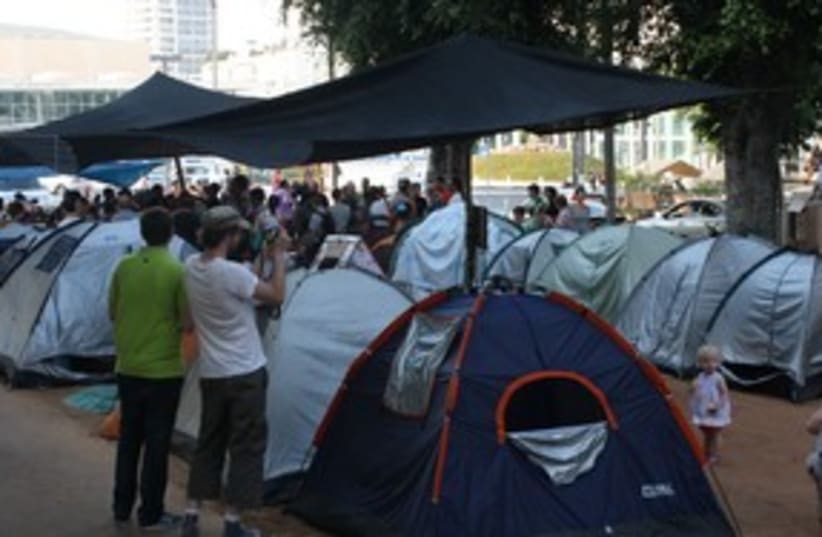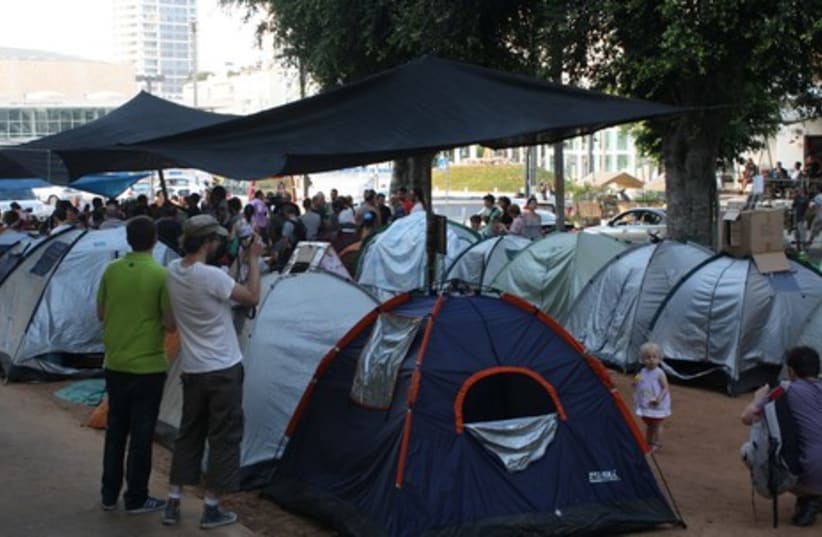
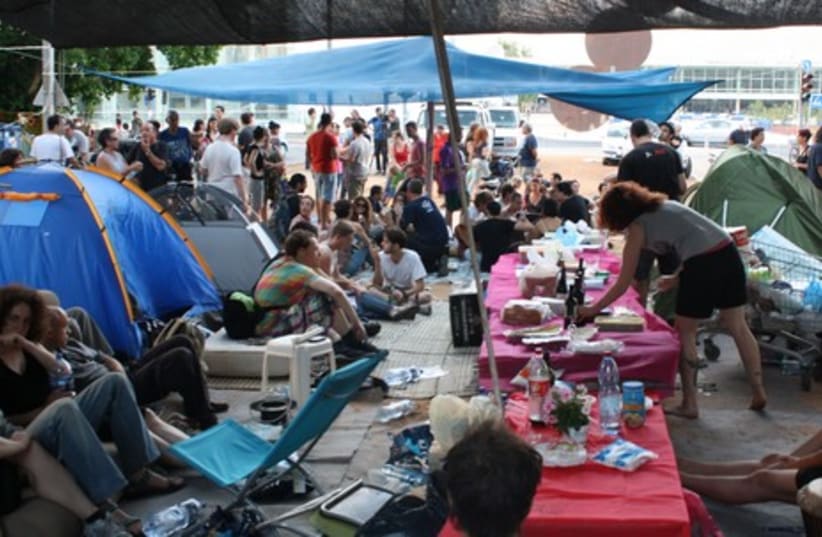
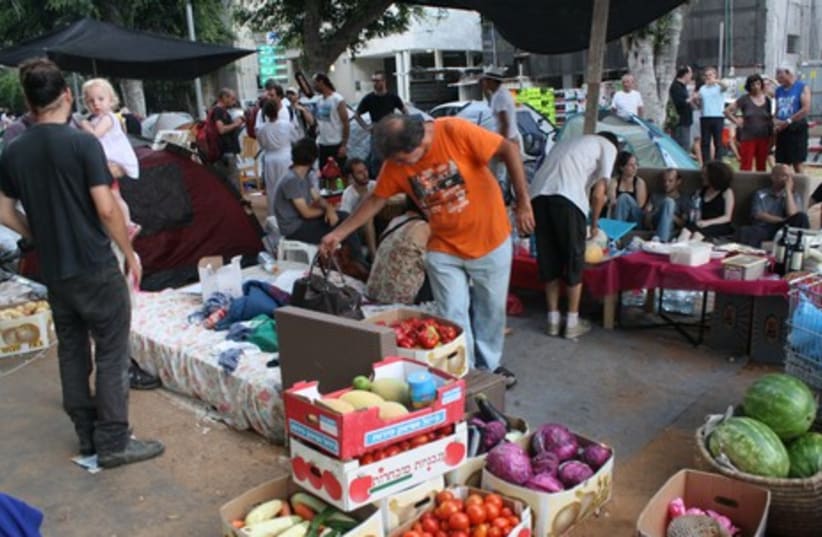
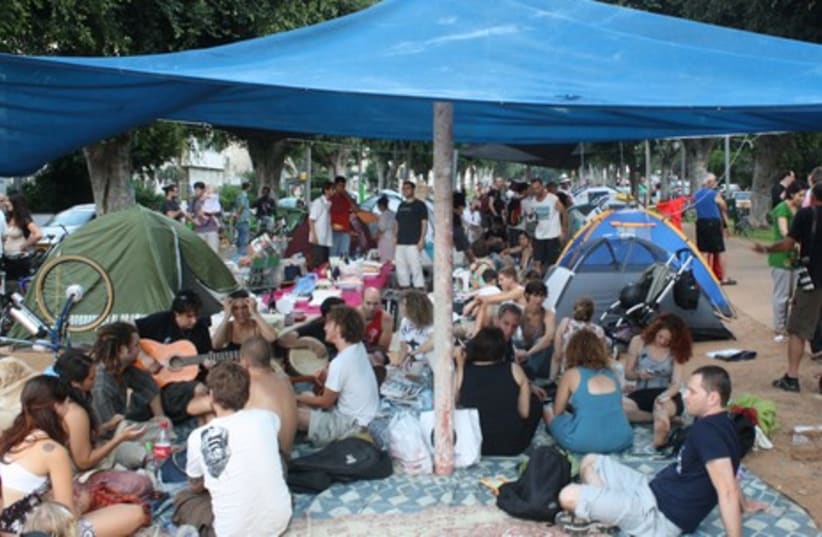
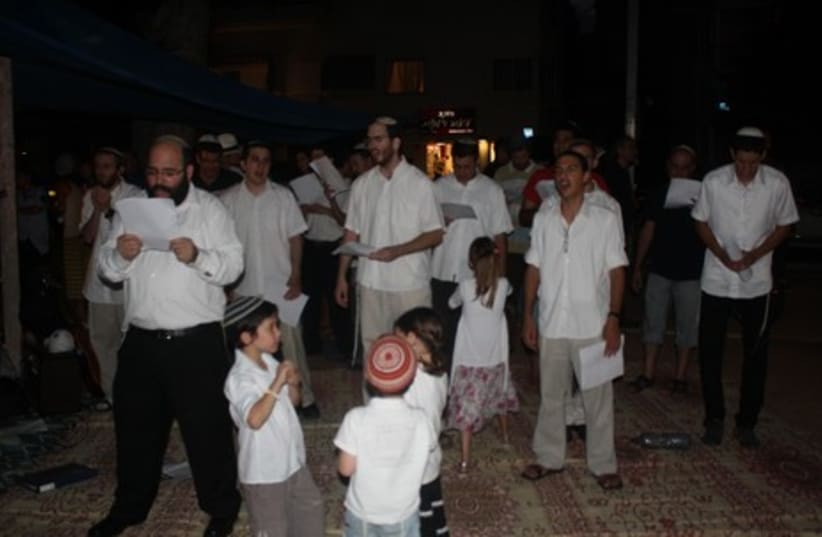
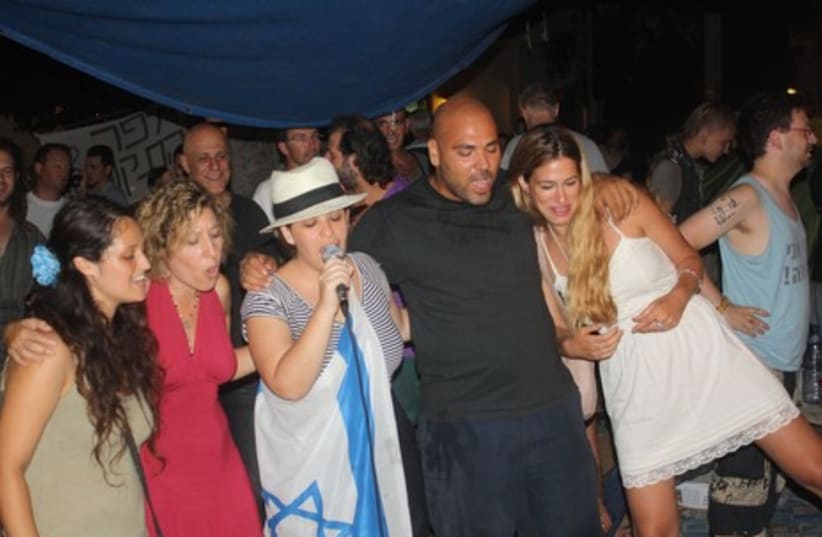

Cities that took part stretched from the Negev to the Upper Galilee, including Kiryat Shmona and Beersheba, where protesters pitched tents for the second night running.RELATED:PM calls on opposition to help solve housing crisis
PM calls on ‘rent revolters’ to protest at Knesset ‘Revolt over rent’ launched in Tel Aviv Students from Shenkar College and the Academic Center of Law and Business in Ramat Gan set up 10 tents at a junction next to the city’s National Stadium, and said they would stay until nightfall to show their support for the protest.“There is a great deal of confusion among the public. People think that it’s just in Tel Aviv – but look at Rehovot, and even Beersheba; there’s nowhere to live, and no alternatives,” one participant, Roi Ezra, 25, said.“The solution is for the government to free up land for housing construction. We’re not out here just screaming without substance. There are solutions, and they must be advanced.”Students at the Ramat Gan protest described their situation as one in which they had moved to the center region from the periphery because of the better higher education opportunities available, but found themselves barely able to cover the high cost of living in the Tel Aviv area.“I live on a moshav next to Kiryat Gat, and take the train back and forth for over an hour and a half in each direction because I can’t find a way a way to pay NIS 3,000 in rent and NIS 3,000 in tuition each month,” Itai Ifrach said. “I can’t picture myself moving to Ramat Gan, or anywhere nearby. I would love to live in Ramat Gan, though.”At the epicenter of the protest on Tel Aviv’s Rothschild Boulevard on Monday evening, a circus atmosphere had taken hold.In the first days after the protest was launched by Tel Avivian Daphni Leef on Facebook last week, the tents covered a single block of the pedestrian walkway. By Monday evening, the tents had swelled in number and dotted a second block of the walkway, now reaching from Habima Square to Rehov Bar-Ilan . Like every day since Friday, a very large media contingent kept the spotlight on the demonstration.A profusion of interest groups had swooped onto the boulevard over the preceding 12 hours, while the infrastructure of the tent city had expanded, now including a compost heap, and a stand where three 20-somethings sold beer and handed out anarchist literature.Nearly a dozen activists from the Im Tirtzu movement strolled through the crowd handing out Israeli flags and chatting with protesters; and at around 7 p.m., a group of anti-African-migrant demonstrators marched through the tent city with placards blaming the housing shortage on African “infiltrators.”While the protest seemed on the verge of losing any semblance of advancing a unified message, it was clear that it had become a phenomenon far beyond what it had been only four days before.